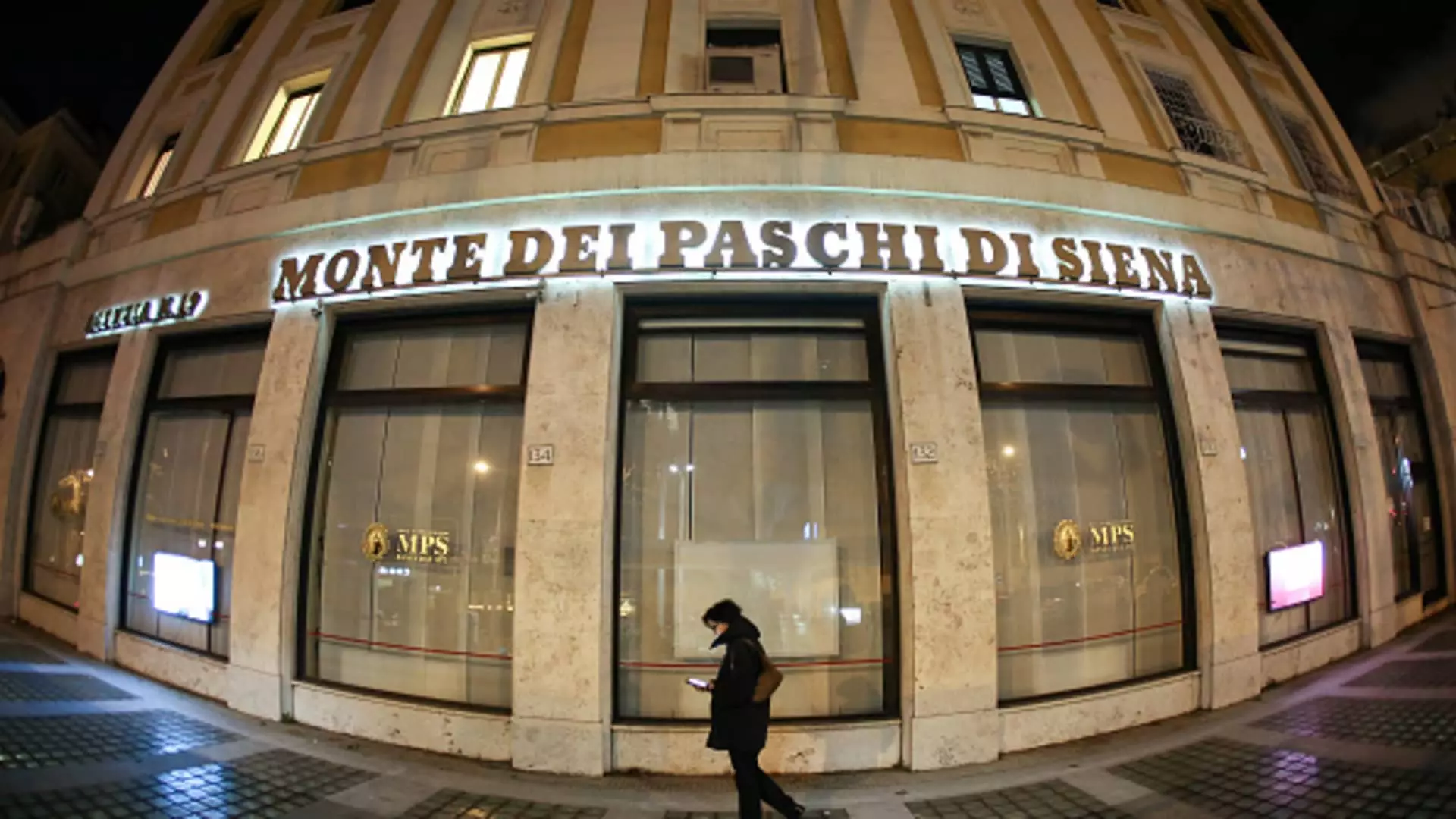In a significant development within Italy’s banking landscape, Monte dei Paschi di Siena (MPS), the world’s oldest bank, has launched a monumental all-share takeover proposal worth approximately €13.3 billion ($13.95 billion) for its larger domestic rival, Mediobanca. This aggressive pursuit comes as MPS attempts to bolster its standing and reinforce its business model following a turbulent history that necessitated a state bailout in 2017.
As details of the offer emerged, market reactions painted a mixed picture: shares of MPS dropped by nearly 8%, reflecting skepticism from investors, while Mediobanca’s stock surged by over 6%. This divergence suggests a divided outlook on the proposed merger’s potential success and benefits. MPS proposes to exchange 23 of its shares for every 10 shares of Mediobanca, valuing the latter at approximately €15.992 per share, which represents a modest 5% premium based on its closing price earlier in the month.
The financial underpinnings of this bid highlight the complexities of the transaction. With MPS’s equity composition currently valued at €8.7 billion and Mediobanca at €12.3 billion, the arithmetic of the deal appears daring. Analysts from KBW voiced concerns, indicating that the potential for synergistic benefits from this merger is somewhat limited. This skepticism is critical as it suggests that the anticipated outcomes in terms of consolidated earnings and market positioning may not be as significant as forecasted by MPS’s leadership.
MPS’s CEO, Luigi Lovaglio, remains optimistic, touting the merger as an opportunity to create a “new Italian champion” that harnesses the strengths of both institutions. The strategic benefits projected include estimated annual pre-tax gains of €700 million, derived largely from tax credits on historical losses and additional revenue enhancements over the coming years. However, whether these financial forecasts will materialize remains to be seen, especially in a regulatory climate that closely scrutinizes such large-scale consolidations.
To legitimatize the takeover, MPS will present its proposal at a shareholder meeting scheduled for April 17. Gaining approval will be paramount, especially given the complexities surrounding institutional investors’ sentiments toward multi-billion euro transactions. The Italian government still holds an 11.73% stake in MPS, further complicating the approval dynamics, as public interests and concerns must be taken into account.
The consolidation push fits within a broader context of increasing mergers and acquisitions (M&A) activity in Italy’s banking sector. For instance, UniCredit’s recent overtures toward Banco BPM highlight a surge in appetite for consolidation. This trend illustrates a sector responding to pressures for efficiency and competitiveness amid a shifting economic landscape—further emphasizing the need for strategic partnerships and acquisitions.
A New Era for Monte dei Paschi
Historically, MPS has been at the center of numerous complex events, from significant financial difficulties to governmental rescues. The recent proposal may signify a pivotal turning point; if successful, it could transition MPS from a troubled legacy into a robust player in Italy’s financial sector. The Italian banking union, Fabi, has remarked on the proposed merger as a step towards strengthening the dynamics of the financial system, reflecting a sentiment of optimism toward MPS’s recovery.
With interest rates on the rise, MPS has already displayed increased stability—offering its first dividend in over a decade and achieving a CET1 ratio, a crucial measure of a bank’s capital adequacy, of 18.3% in the third quarter. Such metrics serve to bolster the bank’s narrative of recovery, yet the skepticism voiced by analysts remains a formidable barrier that MPS must navigate.
The proposed acquisition of Mediobanca by Monte dei Paschi could be a crucial juncture not only for these institutions but also for the Italian banking sector as a whole. While MPS seeks to present itself as a transformed entity ready to seize growth opportunities, it faces the dual challenge of convincing shareholders and navigating market skepticism. The outcome of this bid will likely set the tone for future endeavors in the Italian banking landscape, making it a development worth watching in the months ahead.


Leave a Reply